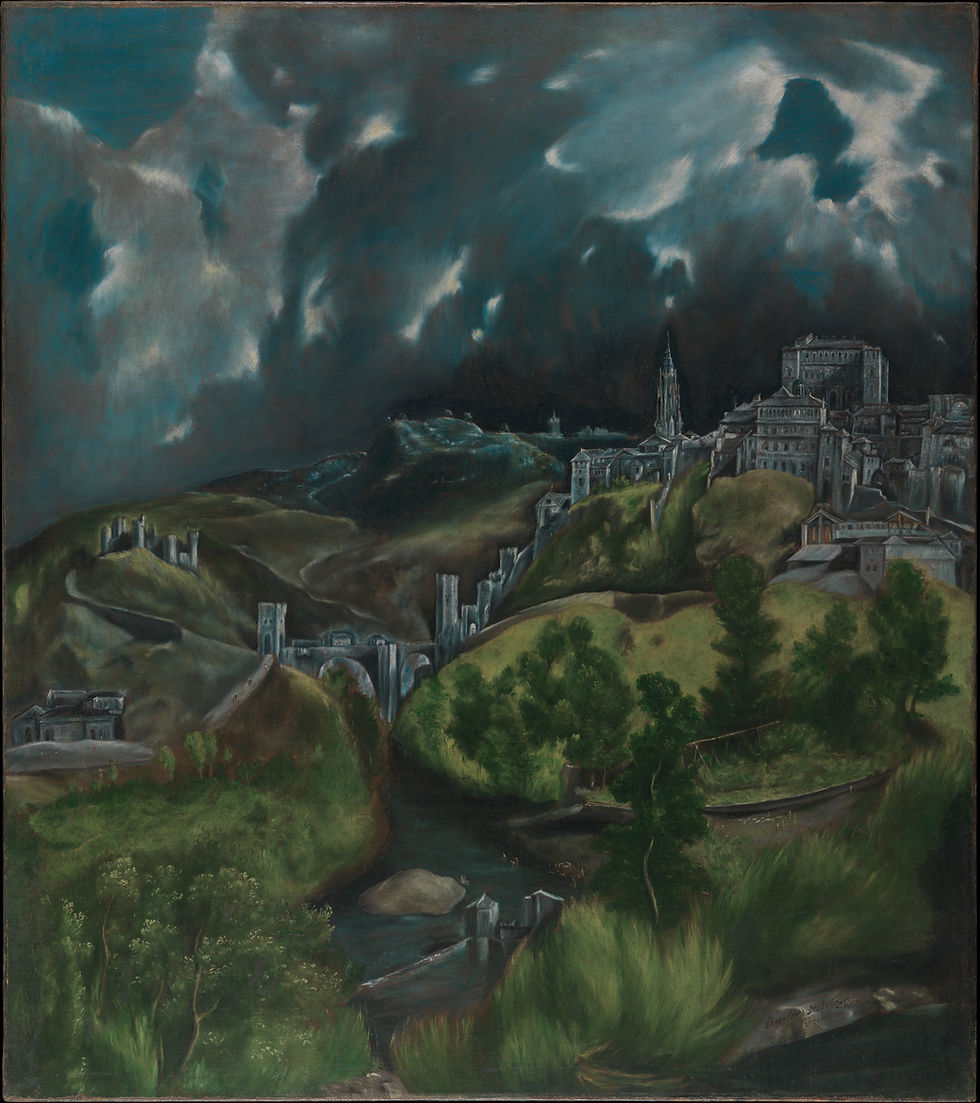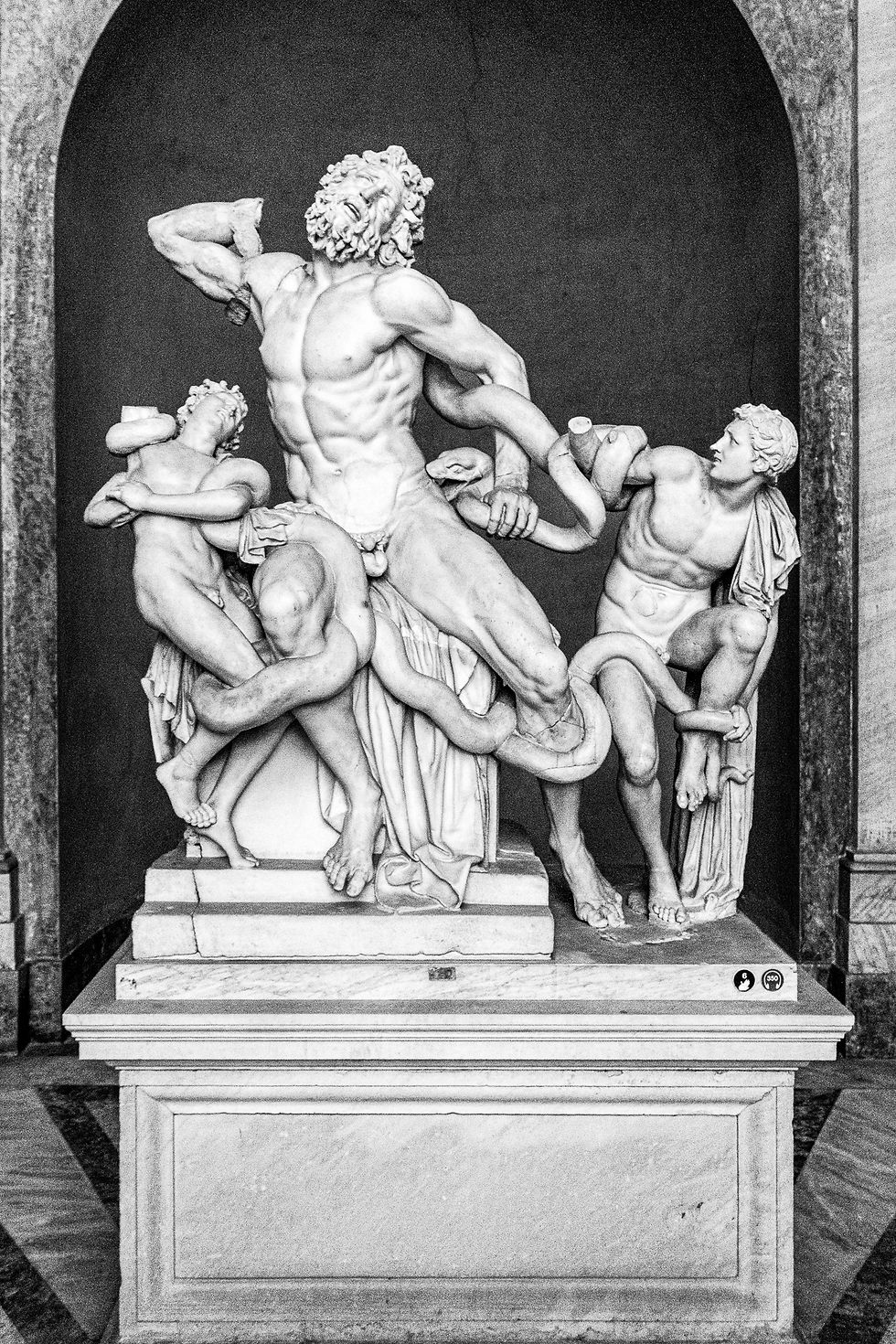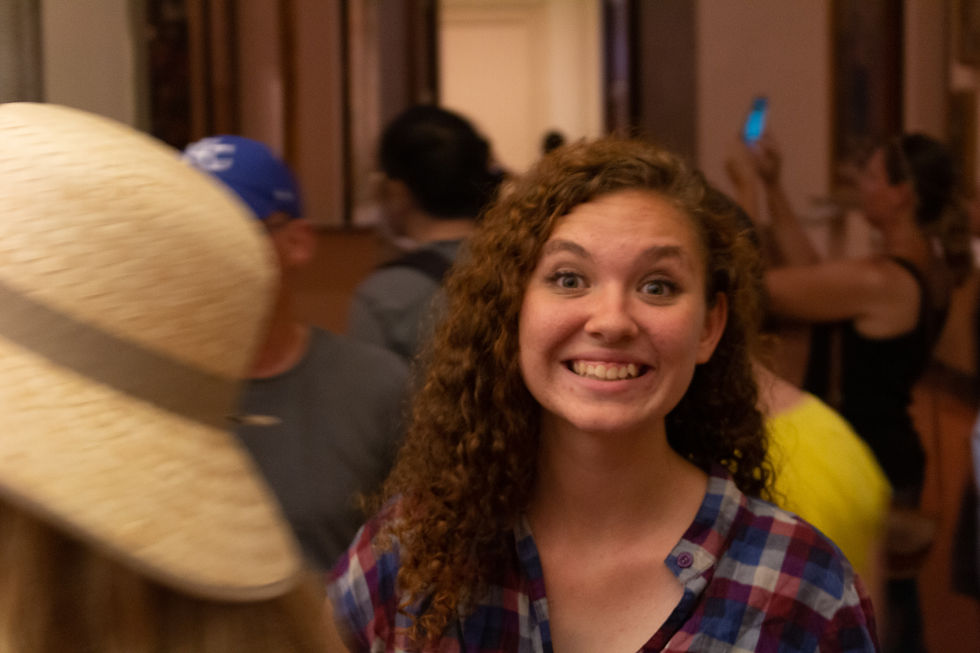El Greco, Laocoön, and Me: A Travel Story About Art
- Rand Blimes

- May 21
- 5 min read
Updated: May 30
I was only about seventeen at the time, on a school trip to New York City with a group of friends. We were visiting the Metropolitan Museum of Art, and at some point, I broke off from the group. Just wandering. Alone. Letting the paintings wash over me.
I had a basic appreciation for art. I liked to draw. I had even taken an art elective in high school that included a bit of art history. So I was enjoying myself, walking through what I would later realize is one of the greatest collections of paintings on the planet.
And then it hit me — with the weight of an entire city.
The Spanish city of Toledo.

The painting I stood in front of wasn’t aiming for realism. It was more about emotional reality — moody and atmospheric, the kind of thing you feel before you understand. I remember noticing the clouds first: the way they cracked open at one spot to let the light stream through. The play of brightness and shadow moved me in a way no piece of art ever had.
Those clouds hung over a city perched on rolling green hills. The city was made of gray stone buildings, the same muted gray as the sky. There was something about the whole composition — the color, the balance, the ache of the light — that sparked something inside me.
An energy burst from the clouds on that canvas into me. A feeling. It wasn’t a named emotion, not love or joy or longing. Just feeling, raw and total.
It was the first time a work of art ever hit me like that. I stood there, dumbfounded. It wasn’t that I didn’t know what to say — it was that I forgot speech existed. I was wound into that painting. Not lost, exactly. Just elsewhere.
I don’t remember walking away. I must have. But it was like waking up. I moved from one state to another.
The painting was View of Toledo by El Greco. And seeing it changed me in some small but real way.
Twenty-five years later, I stepped off a bus from Madrid and into Toledo. I spent the next three days wandering its medieval streets, chasing light, standing on the hillside across the river to glimpse the view that El Greco had captured all those years ago.
Toledo was an amazing city. And for me, it was a kind of pilgrimage.
That painting wasn’t the only work of art that made me feel that way. And Toledo wasn’t the only city I visited because of a love affair with painting. I would later find myself wandering the streets and cafes — and standing on the hills outside Arles, France — because of Van Gogh’s Starry Night.
For a long time, I thought painting was the only medium that could hit me like that.
And then I saw the Laocoön sculpture in the Vatican Museum.
And once again, I stood there — ambushed by feeling.
The Tragic Story of Laocoön
The story of Laocoön is one of those Greek myths that sounds like it was specifically written to traumatize middle schoolers in art class. Laocoön was a Trojan priest, and when the Greeks left behind their infamous wooden horse, he had the gall to say what everyone should have been thinking: “This feels like a trap.” But the gods, apparently rooting for Team Greece, were not having it. So they sent not one, but two giant sea serpents to shut him up—dramatically. The snakes slithered out of the ocean, coiled around Laocoön and his two sons, and crushed them in front of everyone. It was horrifying, it was divine punishment, and it worked—because after that, nobody dared question the horse. They rolled it right through the gates, straight into history’s most avoidable disaster.
Somehow, this whole story was captured in marble. The grief of a father helpless to protect his sons. The knowledge of sure death. The regret at challenging the divine powers of the world.
There are a lot of ancient sculptures out there of people standing around looking noble in togas. Laocoön and His Sons is not one of them.
This sculpture is pure chaos. It shows the exact moment when poor Laocoön is being attacked by the serpents sent by the gods. He’s twisting, straining, muscles tense, mouth wide open in an eternal scream. His sons are also entangled, all of them caught in the coils of divine rage. It's dramatic. It’s tragic. And it’s astonishingly lifelike.

Carved by three Rhodian sculptors around the 1st century BCE (though the exact date is still debated), the sculpture was rediscovered in 1506 in a Roman vineyard. Michelangelo himself reportedly rushed over to see it and basically said, “Yeah, this is the good stuff.” And he wasn’t wrong. The piece is a masterclass in motion and agony, and it helped kick off a whole Renaissance obsession with heroic suffering and dramatically flexed abs.
You don’t just look at Laocoön—you feel it.
When you see the Laocoön sculpture in person, your brain insists that you’re looking at cold, unmoving marble—a dramatic freeze-frame carved from stone. Your brain tells you it’s static. Lifeless. But then you actually look at it.
Look at Laocoön’s left arm. That is not static. That arm is straining—pushing back against the snake that’s coiling up his side. There is resistance in that arm. Tension. Force. That’s not a carved shape. That’s action, caught mid-moment.
And those faces—Laocoön’s, his sons’—they aren’t stone. They are grief. Desperation. Pain, distilled into expression.
And somehow, as you stand there, you feel it too. You know it’s not real. But you feel it anyway. You empathize—with marble. And that’s the magic.
That’s what great art does: it makes us feel. It triggers something inside us and turns passive viewing into shared experience.
Whether you’re surrounded by Monet’s luminous Water Lilies at the Musée de l'Orangerie, or circling Michelangelo’s David as his expression shifts before your eyes; whether you’re searching for symbolism in Aboriginal abstract art or watching the eternal crest of Hokusai’s Great Wave Off Kanagawa—great art moves us.
Not every piece will speak to every person. But once it happens to you—once your soul brushes up against a work of art and something sparks—you never forget it. And if, because travel, you’re lucky enough to gather a handful of those moments in your life, count yourself fortunate. Because they stay with you. Forever.




Comments